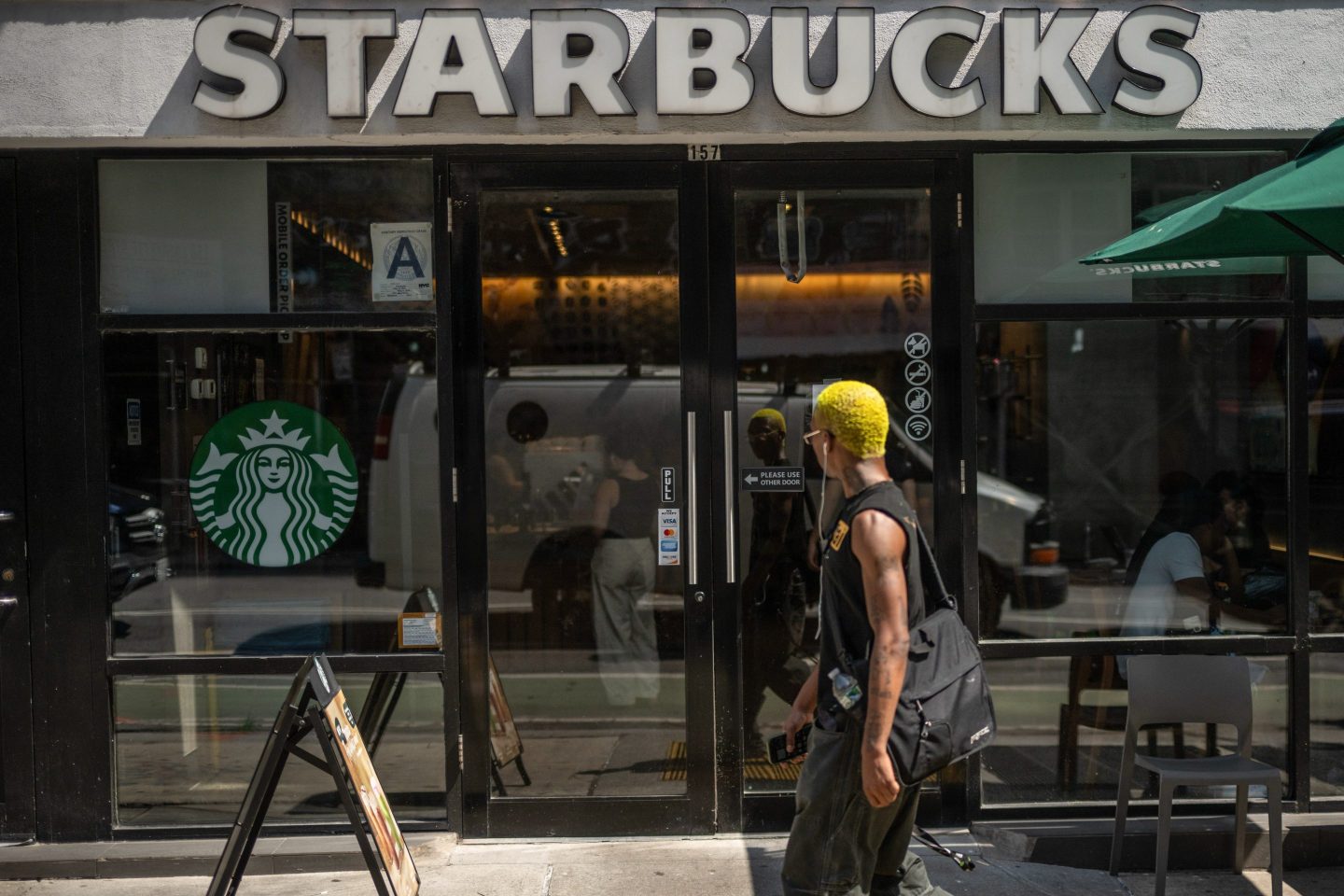Starbucks is betting big on nostalgia.
On Thursday, the coffee giant unveiled a $1 billion restructuring plan that will shutter more than 100 North American cafés, cut 900 non-retail jobs, and remodel over 1,000 locations.
The reset, CEO Brian Niccol said, is about restoring warmth and comfort—an effort to re-create the “third place” he has championed since taking the helm last year, the hangout between home and work that first made Starbucks a global brand in the 1990s.
At the same time, Starbucks appears to be losing ground with Gen Z, something it tacitly admitted in its latest earnings, when it moved to shutter mobile-only “pickup” stores built for speed and “frictionless” transactions that it assumed would be catnip for a digital-native generation. Its market share among the cohort has slipped from 67% to 61% over the past two years, marking four consecutive quarters of declines, according to Consumer Edge.
Starbucks denies that they’ve lost traction with Gen-Z: during their recent quarterly earnings call, Niccol noted that their customer value perceptions are at near two-year highs, driven by gains among Gen Z and milennials who “make up half our customer base.”
However, arguably, like many restaurant chains, Starbucks misread the generation. Seeing their social awkwardness and preference for digital ordering, the company wrongly assumed it should structure its stores around those behaviors. But Niccol told analysts in July that the mobile-only format was “overly transactional and lacking the warmth and human connection that defines our brand.”
But Gen Z, Niccol is betting, craves that old Starbucks feeling the same way it pines for a “’90s kid summer.”
Dubbed by some as the loneliest generation, they’re gravitating instead toward quirky, local coffee shops that double as community hubs and cultural signifiers—the kind you would see on shows like Friends or How I Met Your Mother, Consumer Edge data show.
Niccol thinks the answer is in the original Starbucks innovation of the “third place.”
Bringing back that Central Perk feeling
The idea of the “third place” comes from urban sociologist Ray Oldenburg’s 1989 book The Great Good Place, which argued that society needs gathering spots beyond home and work. Cafés, pubs, gyms, the nail salon—all count.
Starbucks worked hard to epitomize that term; its CEO at the time Oldenburg’s book was first published, Howard Schultz, used it so often on radio shows and in interviews that people assumed he invented it.
“Starbucks was notable for spacious, comfortable seating in the early days,” Karen Christensen, an author and collaborator of Oldenburg’s, told coffee newsletter The Pourover. “It was the usual place to find a seat and Wi-Fi and electricity in a strange city, and a common place to meet friends.”
However, that vibe has been harder to find in recent years. Drive-thrus and mobile pickup now outnumber long sit-down visits, and six straight quarters of falling same-store sales suggest that customers aren’t sticking around. Niccol said in his note the goal now is to bring people back.
“Our goal is for every coffeehouse to deliver a warm and welcoming space with a great atmosphere and a seat for every occasion,” he told employees.
The company says the new investment will prioritize stores that can be remodeled into “lingering spaces.”
Expect more ceramic mugs, softer seating, outlets and layouts designed to slow customers down rather than speed them out the door. Starbucks ended its fiscal year with roughly 18,300 locations across North America, but store growth won’t resume until 2026.
The once and future ‘third place’
The price tag is steep: Starbucks expects $150 million in severance costs and $850 million tied to closures and remodeling. The announcement follows an earlier $500 million investment in barista hours through its “Green Apron Service.”
But labor tensions loom. Starbucks Workers United, which represents more than 12,000 baristas, said it would demand bargaining over the closures. Union leaders warned the cuts risk undercutting the very community vibe Starbucks says it wants to restore.
Beyond finances, the stakes are cultural. As Oldenburg argued, third places are vital to social cohesion—spaces where people of all kinds can rub shoulders. In recent years, many third places have vanished, a trend accelerated by the pandemic.
“Public leisure space is critical for society,” Notre Dame professor Gwendolyn Purifoye told the New York Times. “If you don’t build places to gather, it makes us more strange, and strangeness creates anxiety.”
[This story has been updated to include comments from Starbucks’ earnings call about its staying power with Gen Z.]












